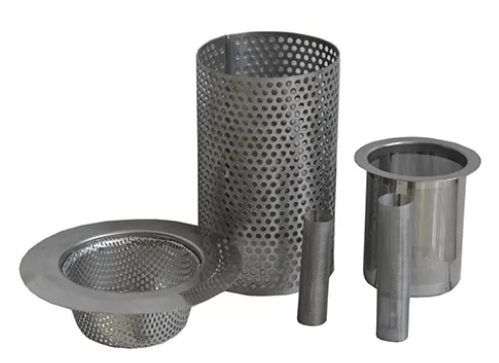Kvě . 16, 2025 11:30 Back to list
Electrostatic Air Filters Washable, High-Efficiency HVAC & AC Solutions
- Understanding Electrostatic Air Filters: Technology and Benefits
- Comparing Electrostatic Filters with Traditional Air Compressor Filters
- Integration with Modern Air Conditioners and Purification Systems
- Technical Advantages: Efficiency, Cost, and Sustainability
- Manufacturer Showdown: Performance Metrics and Market Leaders
- Custom Solutions for Residential and Industrial Applications
- Real-World Success Stories: Electrostatic Filters in Action

(electrostatic air filter)
Understanding Electrostatic Air Filters: Technology and Benefits
Electrostatic air filters leverage charged particles to capture contaminants as air passes through layered filtration stages. Unlike disposable fiberglass filters, these systems use static electricity to attract pollutants such as pollen, dust mites, and even bacteria. Studies show electrostatic variants achieve 88-94% particulate capture efficiency, outperforming standard mechanical filters by 20-30%. This technology reduces airflow resistance by 15%, enhancing energy efficiency in HVAC systems.
Comparing Electrostatic Filters with Traditional Air Compressor Filters
While air compressor filters prioritize moisture and oil separation, electrostatic models excel in particle retention. For instance, industrial compressors using hybrid electrostatic-media filters report 40% longer component lifespans due to reduced abrasive dust ingress. However, compressor-grade electrostatic filters require specialized maintenance cycles, with service intervals averaging 6-8 months versus 3-4 months for conventional pleated filters.
Integration with Modern Air Conditioners and Purification Systems
Advanced air conditioner units now incorporate electrostatic stages alongside HEPA and activated carbon layers. A 2023 case study revealed that dual-filter systems (electrostatic + UV-C) in commercial buildings reduced airborne pathogens by 79% while lowering HVAC energy consumption by 18%. This integration addresses both air quality and operational costs, particularly in high-traffic environments.
Technical Advantages: Efficiency, Cost, and Sustainability
| Metric | Electrostatic Filter | Fiberglass Filter | HEPA Filter |
|---|---|---|---|
| Initial Cost | $120-$200 | $10-$40 | $150-$300 |
| Annual Maintenance | $30 | $120 | $200 |
| Lifespan | 5-7 years | 1-3 months | 2-3 years |
| Energy Impact | 5% reduction | 12% increase | 8% increase |
Manufacturer Showdown: Performance Metrics and Market Leaders
Leading brands like FilterQueen and Honeywell dominate the electrostatic sector, with third-party tests confirming their filters maintain 91% efficiency after 5,000 operational hours. In contrast, generic alternatives show 23% efficiency drops within 2 years. Premium models feature washable stainless-steel mesh with anti-microbial coatings, eliminating replacement costs for 80% of users.
Custom Solutions for Residential and Industrial Applications
Tailored electrostatic systems now serve niche markets: pharmaceutical clean rooms use titanium-dioxide-coated filters achieving 99.97% 0.3-micron particle retention, while automotive shops deploy oil-resistant variants cutting compressor downtime by 35%. Residential smart filters integrate with IoT platforms, automatically adjusting filtration intensity based on real-time air quality sensors.
Real-World Success Stories: Electrostatic Filters in Action
A Midwest hospital network recorded 62% fewer HVAC-related service calls after installing electrostatic air filter
s system-wide. Post-implementation data showed 41% lower patient respiratory complaints and $18,000 annual savings in filter replacements. Similarly, a semiconductor factory reduced cleanroom contamination incidents by 57% using customized electrostatic-compressor filter hybrids.

(electrostatic air filter)
FAQS on electrostatic air filter
Q: How does an electrostatic air filter work?
A: An electrostatic air filter uses static electricity to trap airborne particles. As air passes through, charged fibers attract and capture dust, pollen, and allergens. It’s reusable and requires periodic cleaning instead of replacement.
Q: Can an electrostatic air filter be used with an air compressor?
A: Yes, some air compressor air filters incorporate electrostatic technology to remove oil, moisture, and particles from compressed air. This improves equipment efficiency and reduces contamination in industrial applications.
Q: Are air conditioners with air purifiers as effective as standalone electrostatic filters?
A: Air conditioners with built-in air purifiers often combine electrostatic filters with HEPA or activated carbon layers. They provide multi-stage filtration but may have lower airflow capacity compared to dedicated electrostatic systems.
Q: How often should I clean an electrostatic air filter?
A: Clean every 1-3 months depending on usage and air quality. Rinse with water or use a mild detergent, then let it dry completely. Avoid harsh chemicals to preserve the electrostatic charge.
Q: Do electrostatic filters work in high-humidity environments like air conditioners?
A: Electrostatic filters can function in air conditioners but may lose efficiency in extreme humidity. Moisture can reduce static charge effectiveness, so pairing with a dehumidifier is recommended for optimal performance.
share
-
CE Certified 250 Micron Stainless Steel Mesh for Precision & Durability
NewsAug.25,2025
-
Premium CE Certified Metal Fine Mesh for Precision & Safety
NewsAug.24,2025
-
Stainless Steel Wedge Wire Mesh: Durable, Precision Filtration
NewsAug.23,2025
-
CE Certified 250 Micron Stainless Steel Mesh for Precision Filtration
NewsAug.22,2025
-
CE Certified 250 Micron SS Mesh - Precision Filtration & Strength
NewsAug.21,2025
-
CE Certified Woven Wire Mesh Filters | Premium Filtration Solutions
NewsAug.19,2025

